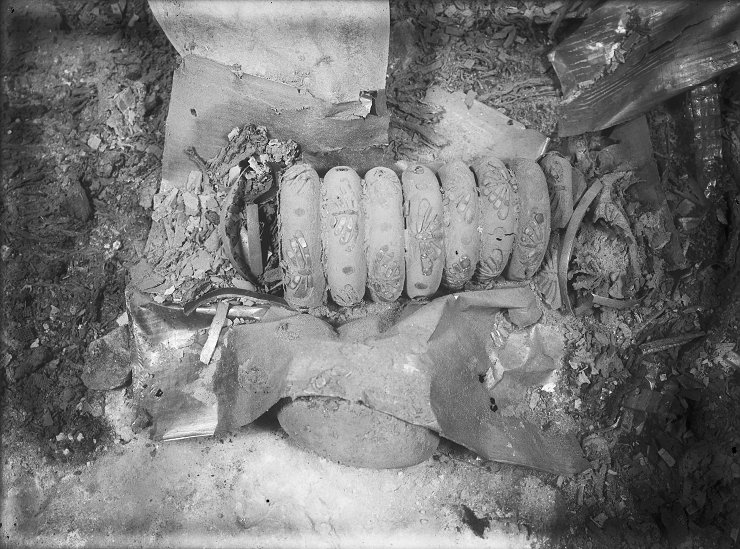Silver from 4,600-year-old Egyptian royal jewellery comes from Europe
Categories: Nálezy nejenom s detektorem na blízkém východě
A new study has revealed the origins of silver in the largest known collection from the early Egyptian period. The silver bracelets of Queen Hetepheres I have been a great mystery to scholars until now, but now the source of the raw material has been located in Greece. The discovery confirms, among other things, how extensive and important the trade network was during the height of the pyramid period four and a half thousand years ago.
Hetepheres I was the wife of Pharaoh Snofru and mother of Khufu, the builder of the Great Pyramid of Giza. Her tomb was discovered in 1925 next to her son's pyramid. Although the alabaster sarcophagus was empty and had probably been looted in the past, the tomb still contained many furnishings, including apens, gold vessels and the oldest intact set of canopies ever discovered in an ancient Egyptian tomb.
The most intriguing discovery was inside the remains of a wooden box covered in gold leaf. It contained a set of 20 circular bracelets, ten for each arm. Some were broken, but despite some corrosion, the Queen's bracelets are the largest surviving collection of silver artefacts found in early Egypt. They were made of silver inlaid with turquoise, lapis lazuli and butterfly-shaped carnelian. Queen Hetepheres I's bracelets were a testament to her wealth and eminence.
The style and materials of the inlay are Egyptian, but silver from the old empire is very rare. Egypt has no native deposits of silver ore, and silver artifacts do not appear consistently in the archaeological record until the Middle Bronze Age (around 1 900 BC). Almost a century after their discovery, the bracelets were therefore subjected to compositional, mineralogical, microscopic and isotopic analysis. Lead isotope analysis narrowed the source of the silver to the Cyclades, with the second most likely place of origin being the Lavrion mines in Attica.
The silver was probably transported through the port of Byblos on the Lebanese coast. It is the earliest evidence of long-distance exchange between Egypt and Greece: "The origin of the silver used for artefacts during the third millennium (B.C. Dr Karin Sowada, from the Department of History and Archaeology at Macquarie University, said. "The new findings show for the first time the potential geographic extent of the trade networks used by the Egyptian state during the early Old Kingdom at the height of the pyramid-building period."
"Electron microscope images show that the bracelets were made by cold hammering with frequent annealing to preventto prevent them from breaking," added Professor Damian Gore of Macquarie University, adding that they were also apparently alloyed with gold for better workability and appearance. The samples were analysed from the collections of the Museum of Fine Arts, Boston.
Roman Nemec
Sources: scimex.org, doi.org, thehistoryblog.com

One of Queen Hetepheres' bracelets

A set of corroded bracelet fragments

The bracelets, after cleaning and preservation, were on display in the 1930s

Bracelets in the royal burial chamber in 1925
The article is included in categories: